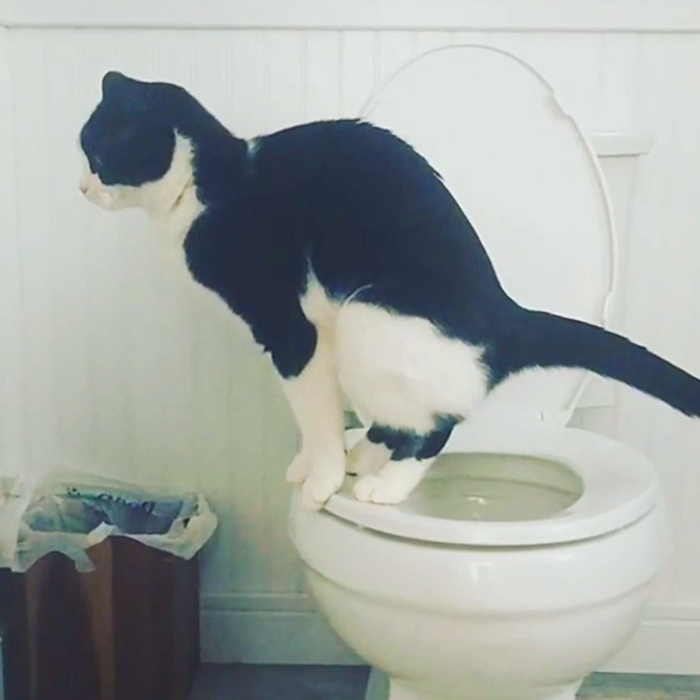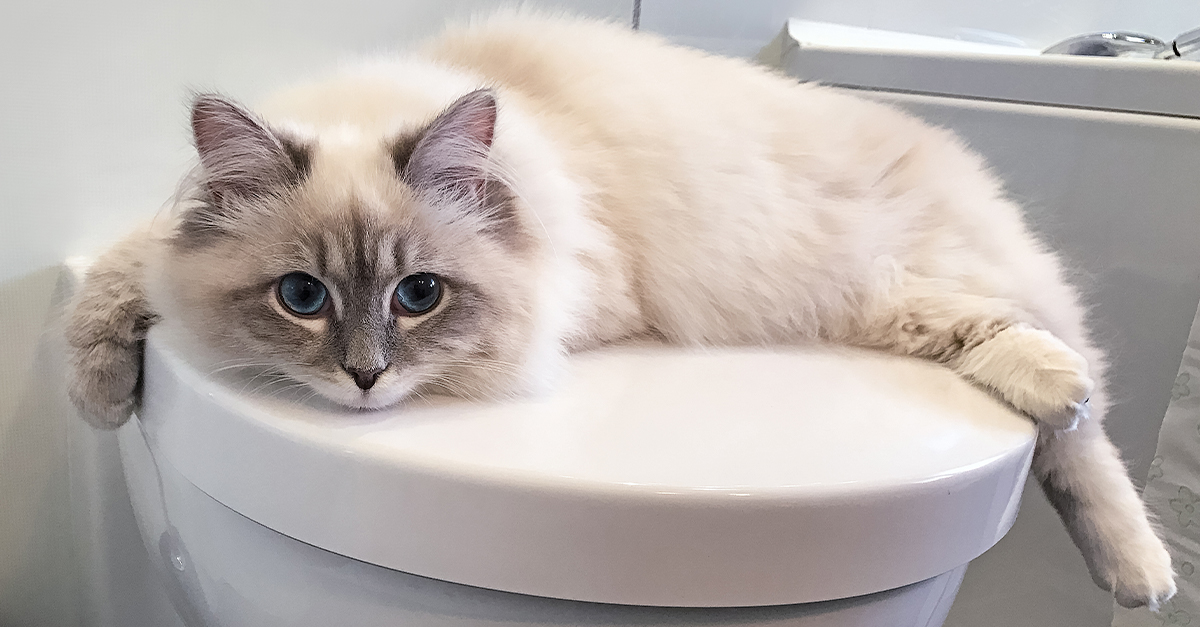Which Flushing Animal Waste Down the Toilet Can be Harmful
Which Flushing Animal Waste Down the Toilet Can be Harmful
Blog Article
Nearly everybody is bound to have their unique assumption in relation to Can You Flush Dog and Cat Poo Down the Toilet?.

When it concerns dealing with waste, particularly animal waste, lots of people typically resort to the convenient choice of flushing it down the toilet. Nevertheless, this apparently simple remedy can have serious consequences for the atmosphere and public health. In this short article, we'll discover why flushing animal waste down the bathroom is a poor concept and give alternate techniques for appropriate disposal.
Intro
Proper waste disposal is essential for keeping ecological sustainability and public health. While it might appear safe to purge animal waste down the bathroom, it can lead to different issues, both for the atmosphere and human well-being.
Threats of flushing animal waste
Ecological impact
Flushing pet waste presents harmful germs and microorganisms right into rivers, which can adversely influence aquatic ecological communities. These virus can contaminate water sources and damage aquatic life, disrupting delicate environments.
Public health problems
Animal waste includes damaging microorganisms such as E. coli and Salmonella, which can present significant wellness dangers to humans. Flushing pet waste down the commode can pollute water materials, leading to the spread of illness and infections.
Alternatives to flushing
Rather than flushing pet waste down the commode, there are several different disposal approaches that are more eco-friendly and sanitary.
Composting
Composting animal waste is an environmentally friendly method to deal with it. By composting, raw material is broken down into nutrient-rich dirt, which can be used to fertilize gardens and plants.
Land fill disposal
Throwing away animal waste in a garbage dump is one more choice. While not as environmentally friendly as composting, it is a safer alternative to flushing, as it stops the contamination of water resources.
Animal garbage disposal systems
There are specific pet garbage disposal systems readily available that securely and hygienically dispose of animal waste. These systems often utilize enzymes to break down waste and get rid of smells.
Actions to proper animal waste disposal
To ensure correct disposal of animal waste, follow these steps:
Scooping and nabbing waste
Routinely scoop and bag pet waste using naturally degradable bags. This prevents waste from infecting the atmosphere.
Using designated waste containers
Dispose of bagged pet waste in assigned waste bins, such as garden compost bins or landfill containers. Stay clear of flushing it down the toilet whatsoever prices.
Cleansing can and family pet locations on a regular basis
Frequently tidy can and animal areas to stop the build-up of waste and microorganisms. Use pet-safe cleaning products to maintain health.
Advantages of proper disposal approaches
Embracing correct disposal approaches for pet waste supplies a number of advantages:
Decreased environmental pollution
Proper disposal here techniques decrease the danger of environmental pollution, safeguarding rivers and ecological communities from contamination
Reduced risk of water contamination.
By preventing flushing pet waste down the toilet, the risk of water contamination is considerably minimized, guarding public health.
Boosted hygiene and hygiene
Correct disposal techniques promote much better cleanliness and hygiene, developing a much safer environment for both people and animals.
Conclusion
In conclusion, flushing animal waste down the commode is harmful to the environment and public health. By adopting different disposal techniques and complying with correct waste monitoring techniques, we can lessen the adverse impact of animal waste and add to a cleaner, much healthier planet.
What To Do With Dog Poo – The Do's And Don'ts Of Disposing Of Faeces
Dog poo bins
Some councils provide dedicated dog waste bins in popular dog-walking areas that can take dog poo that has been bagged but you can legally dispose of dog waste in any public litter bin, as long as it is securely bagged. This also applies to your wheelie bin at home.
Do not flush
Water companies do not recommend flushing dog faeces down the toilet because certain parasites can survive the water processing treatment and are potentially harmful to humans. You should also never consider flushing dog poo that has been bagged down the toilet as the bags will not break down and instead create severe blockages in the sewage system.
In the woods
The Forestry Commission promotes a ‘stick and flick’ method for dealing with waste in the woods. This means finding a stick and using it to flick any poo from off the path so that it is out of the way of other walkers. You could also bury it as long as it is not in an area where there might be livestock.
Livestock
Parasites found in dog poo can be transmitted to livestock if they inadvertently eat infected faeces that has been left on grazing land. This could result in the death of sheep or abortion in cattle so you should always make sure you pick up your dog’s waste in fields where livestock could be present.

Frequently tidy can and animal areas to stop the build-up of waste and microorganisms. Use pet-safe cleaning products to maintain health.
Advantages of proper disposal approaches
Embracing correct disposal approaches for pet waste supplies a number of advantages:
Decreased environmental pollution
Proper disposal here techniques decrease the danger of environmental pollution, safeguarding rivers and ecological communities from contamination
Reduced risk of water contamination.
By preventing flushing pet waste down the toilet, the risk of water contamination is considerably minimized, guarding public health.
Boosted hygiene and hygiene
Correct disposal techniques promote much better cleanliness and hygiene, developing a much safer environment for both people and animals.
Conclusion
In conclusion, flushing animal waste down the commode is harmful to the environment and public health. By adopting different disposal techniques and complying with correct waste monitoring techniques, we can lessen the adverse impact of animal waste and add to a cleaner, much healthier planet.
What To Do With Dog Poo – The Do's And Don'ts Of Disposing Of Faeces
Dog poo bins
Some councils provide dedicated dog waste bins in popular dog-walking areas that can take dog poo that has been bagged but you can legally dispose of dog waste in any public litter bin, as long as it is securely bagged. This also applies to your wheelie bin at home.
Do not flush
Water companies do not recommend flushing dog faeces down the toilet because certain parasites can survive the water processing treatment and are potentially harmful to humans. You should also never consider flushing dog poo that has been bagged down the toilet as the bags will not break down and instead create severe blockages in the sewage system.
In the woods
The Forestry Commission promotes a ‘stick and flick’ method for dealing with waste in the woods. This means finding a stick and using it to flick any poo from off the path so that it is out of the way of other walkers. You could also bury it as long as it is not in an area where there might be livestock.
Livestock
Parasites found in dog poo can be transmitted to livestock if they inadvertently eat infected faeces that has been left on grazing land. This could result in the death of sheep or abortion in cattle so you should always make sure you pick up your dog’s waste in fields where livestock could be present.

As an enthusiastic person who reads on Don't Flush Your Pets Poo Down The Loo, Vet Warns, I thought sharing that excerpt was sensible. Liked our entry? Please quickly share it. Let others locate it. I appreciate reading our article about Don't Flush Your Pets Poo Down The Loo, Vet Warns.
Call Report this page